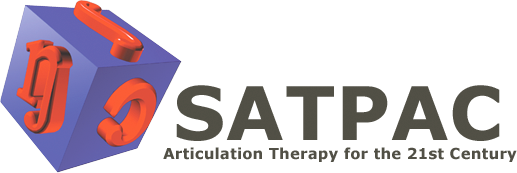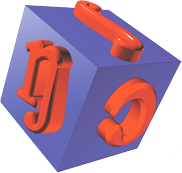Multimodality Approach to Articulation
December 6, 2011 6:04 pm
![]() for Speech-Language Pathologists & Audiologists
for Speech-Language Pathologists & Audiologists
October 27, 2003 – Vol. 13 – Issue 43 – Page 9
By Stephen Sacks, MA, CCC-SLP
Working on the /r/ sound for years with minimal progress frustrates students and therapists, clogs up caseloads, and takes valuable time away from children with more severe deficits. Having spent the last 23 years as a speech-language pathologist in the schools, I have developed an effective system that utilizes a multimodality approach to integrate auditory, visual and tactile-kinesthetic-proprioceptive feedback.
I begin by asking students to say “EER.” Invariably, the response is “EEO” (“O” as in “bought”). Usually, they are not stimulable and do not have a facilitating context. They typically drop the jaw and round the lips. These are significant indicators because an important goal of saying “EER” correctly is to differentiate the tongue movement from the lips and jaw. Generally, when EER is said correctly, only the tongue moves while the lips and jaw are stationary.
I begin using the visual modality right away, modeling correct and incorrect tongue placement. I demonstrate the correct EER, mimic the student’s EER, and ask the student to tell me what is different between the two. I tell the student to watch my tongue, particularly the sides, to see what is different. Usually, they can see and describe that the sides of my tongue stay up on my top teeth while theirs drop down.
We work on getting the tongue pulled back and wide by doing “tongue push-ups.” Using a mirror and flashlight, the student opens the mouth wide, pulls the tongue back as far as possible into a ball, and then closes halfway and says “EE,” pushing up on the top teeth with the sides of the tongue. If the student has difficulty pulling the tongue back, touching the side of the tongue near the back with an applicator stick usually works.
If the student is still unsuccessful, oral-motor techniques, such as sipping pudding through a straw or blowing horns as described by Sara Rosenfeld-Johnson, MS, CCC-SLP, of Sara R. Johnson Oral-Motor Speech & Language Associates, in Tucson, AZ, will do the trick.1-2 The sides of the tongue should be pushed up against the back molars. These steps are all visible to the student.
A frequent problem is the inability of students to grade the jaw appropriately and stop halfway open. For these students we practice jaw grading, using a scale of one to four. One has the teeth closed in a normal bite, two has the teeth slightly open, three has the mouth open halfway, and four has the mouth all the way open. We practice different sequences until the student can stop easily at each number. The mirror and flashlight then are taken away, and the exercise is repeated using proprioceptive feedback.
After they can competently move their jaw into the four positions without visual feedback, students are ready to attempt EER. They keep the mouth halfway open and say, “EE, EE, EER.” If they still drop the sides of the tongue on EER, which is usually the case, I use a tongue depressor to assist them. Placing one hand behind their neck for stability, I place the stick laterally under their tongue. I tell them to keep their bottom lip in a tight smile and keep their mouth still. When they say “EE, EE,” the stick stays still. When they say “EER,” I push up and back under the tongue. The student will say a correct EER approximately 80 percent of the time.
Students often feel they have to pull the tongue way back to get the correct /r/ sound, while the reality is the opposite. It is just a slight backward movement with the stick primarily assisting the sides to stay up on the top teeth. Perhaps 20 to 50 repetitions are needed before the student can take the stick and do this exercise independently. I allow for visual feedback, if needed, using a mirror and flashlight, which I hold.
At this point it becomes very individualized. Some students can proceed without the stick, while others need to use it for a week or two before moving on. Once they begin to show consistent success, only EER is said. Many repetitions are very important. I have my students do sets of 50 to 100 and daily practice of 50 to 100 at home. Tactile-kinesthetic feedback is important as the mirror and flashlight are removed. I ask students to close their eyes occasionally and feel what they are doing as they make the correct /r/ sound.
Once the student can say EER, the most frequent mistake is not keeping the mid-tongue area high enough. As a result, a clear /r/ sound does not come out. Using a mirror and flashlight for visual feedback, place an applicator stick tip midline where the hard and soft palates meet. Instruct the student to touch the point of the stick with the mid-tongue area and say EER. Most often the student will not get the tongue high enough to touch, but the attempt to keep the tongue higher results in a successful /r/ sound.
While this progress is happening, I focus on more consistent responses through mirroring their responses. Every time they make an incorrect EER sound, I give them immediate auditory feedback. Eventually, they listen more closely to their responses and will self-correct.
When students are making consistent EER sounds, I find a facilitating context using coarticulation and eventually proceed into the Systematic Articulation Training Program Accessing Computers (SATPAC).3 This program establishes a CVCCVC nonsense word through seven steps that are progressively more difficult and then uses nine lists of CVCCVC nonsense words and contrasting sentences to generalize correct /r/ production in every phonetic context. Finally, the sound is transferred into phrases, sentences and real activities.
References
1. Rosenfeld-Johnson, S., Manning, D. (1999). Using simple tools in oral-motor therapy. Part I: Straws. ADVANCE, 9 (16): 20-21
2. Rosenfeld-Johnson, S., Manning, D. (1999). Using simple tools in oral-motor therapy. Part II: Horns. ADVANCE, 9 (22): 20-21
3. Sacks, S., Shine, R. (2002). SATPAC Version 3.0, SATPAC Speech LLC 2000-2002
For more information contact Stephen Sacks at info@satpac.com or https://satpac.com/
Copyright å©2004 Merion Publications 2900 Horizon Drive, King of Prussia, PA 19406 ‰Û¢ 800-355-5627 Publishers of ADVANCE Newsmagazines www.advanceweb.com
This article was published by ![]() for Speech-Language Pathologists & Audiologists
for Speech-Language Pathologists & Audiologists
October 27, 2003 – Page 9



